
How to Use Real Time Clock Module - DS1307 RTC Breakout Board: Examples, Pinouts, and Specs
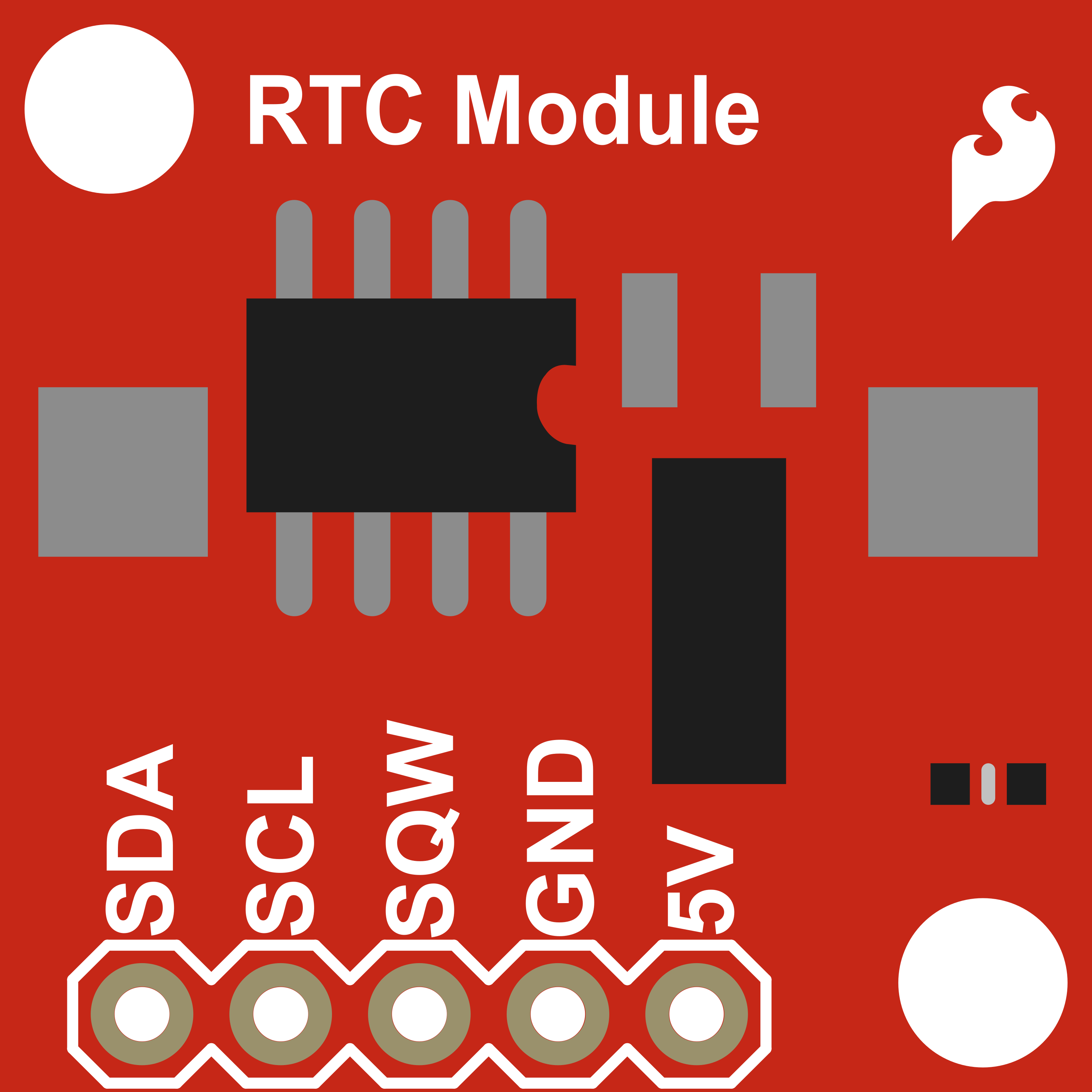
 Design with Real Time Clock Module - DS1307 RTC Breakout Board in Cirkit Designer
Design with Real Time Clock Module - DS1307 RTC Breakout Board in Cirkit DesignerIntroduction
The DS1307 Real Time Clock (RTC) Module is a low-power, full binary-coded decimal (BCD) clock/calendar with 56 bytes of NV SRAM. It provides precise timekeeping with a built-in 32.768 kHz crystal oscillator. Common applications include timekeeping in embedded systems, logging events with timestamps, and maintaining accurate time across power cycles in devices like digital clocks, attendance systems, and data loggers.
Explore Projects Built with Real Time Clock Module - DS1307 RTC Breakout Board
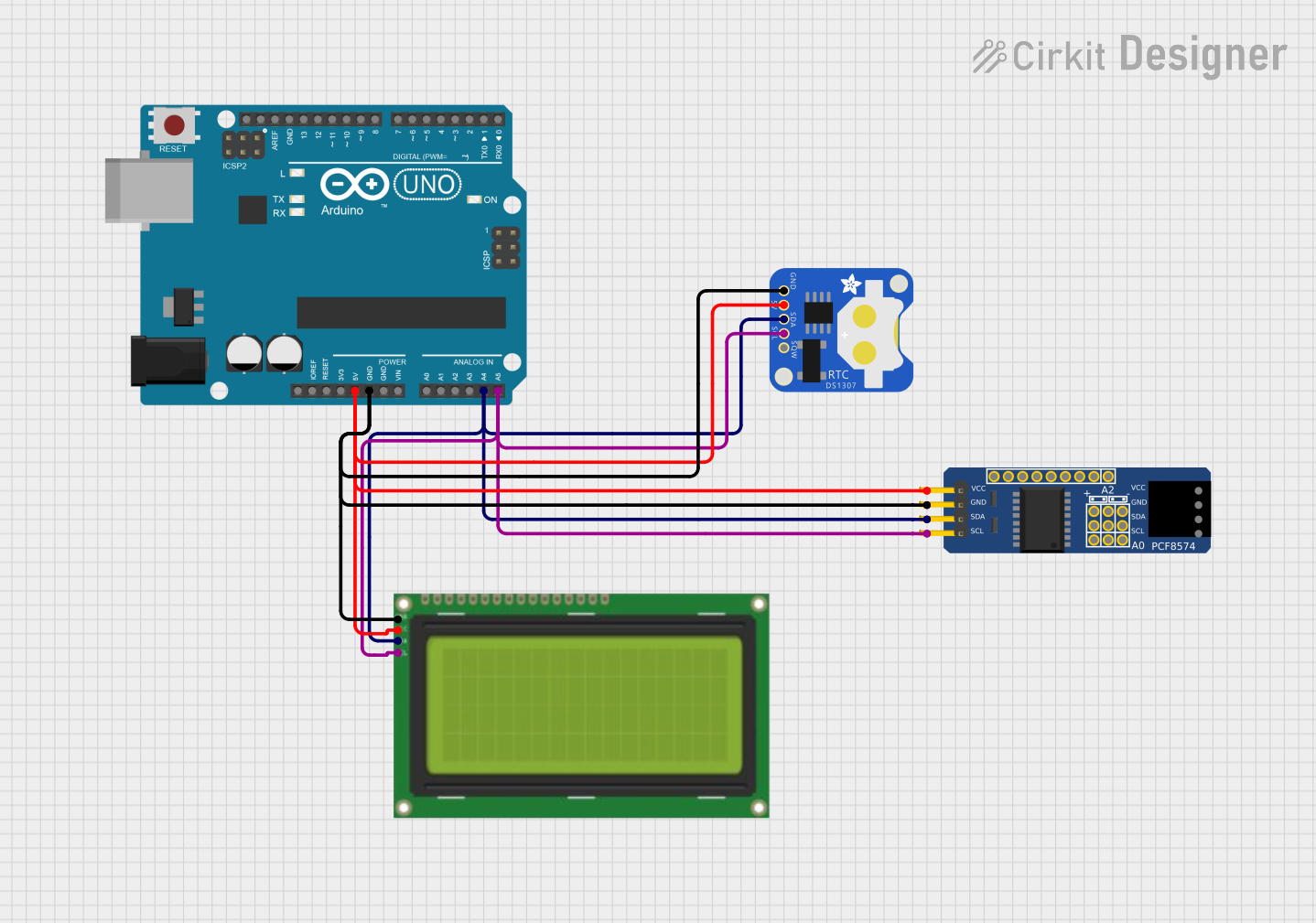
 Open Project in Cirkit Designer
Open Project in Cirkit Designer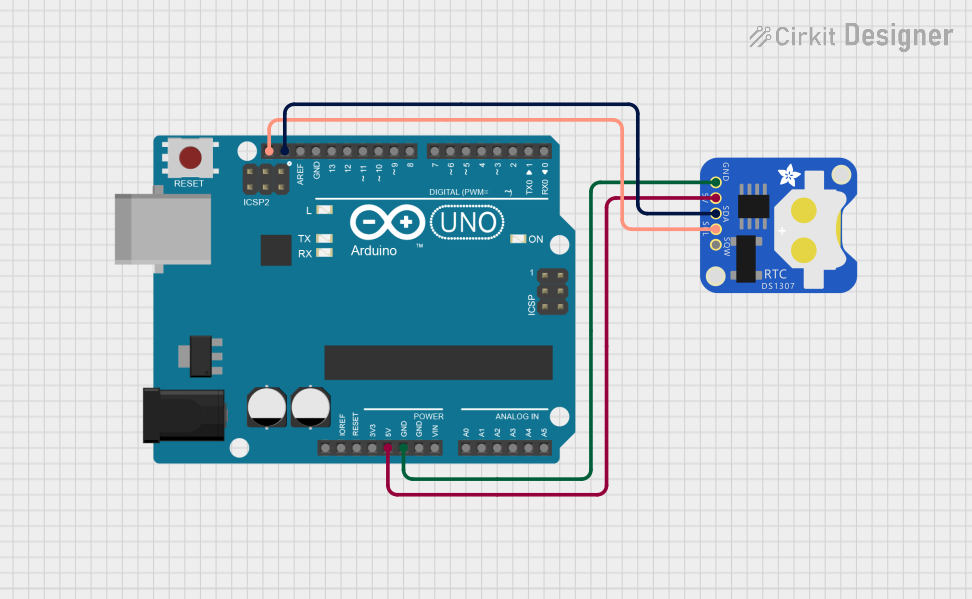
 Open Project in Cirkit Designer
Open Project in Cirkit Designer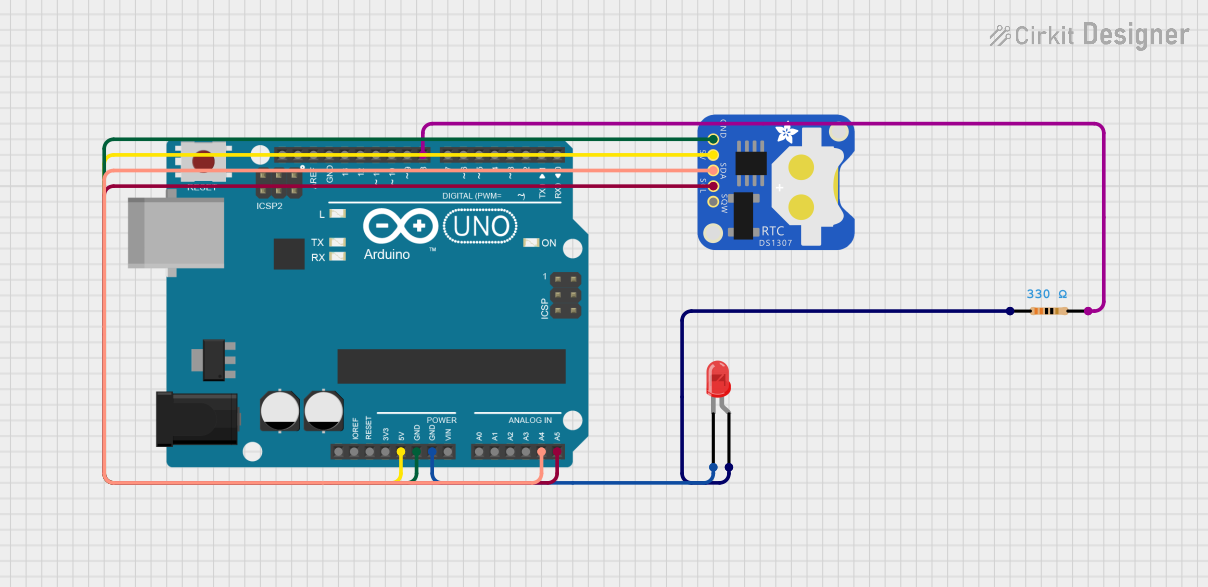
 Open Project in Cirkit Designer
Open Project in Cirkit Designer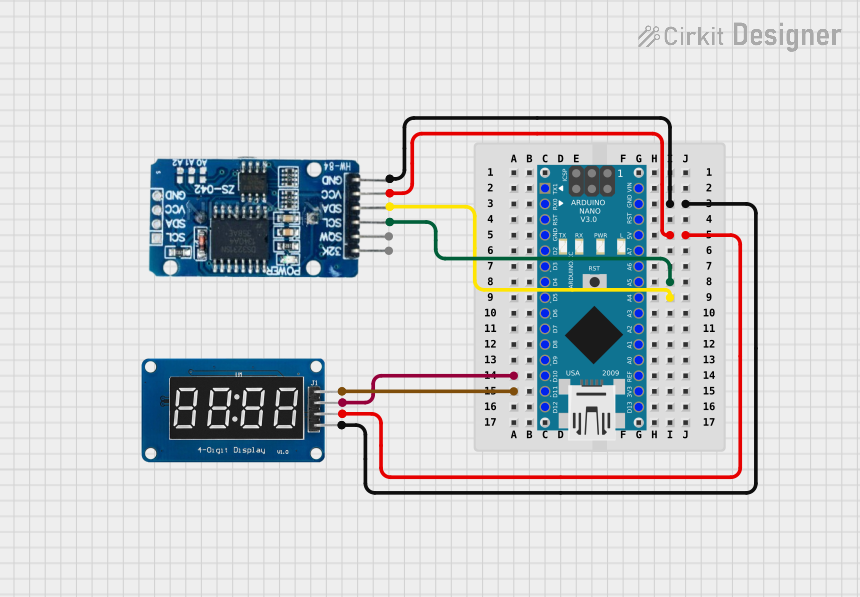
 Open Project in Cirkit Designer
Open Project in Cirkit DesignerExplore Projects Built with Real Time Clock Module - DS1307 RTC Breakout Board

 Open Project in Cirkit Designer
Open Project in Cirkit Designer
 Open Project in Cirkit Designer
Open Project in Cirkit Designer
 Open Project in Cirkit Designer
Open Project in Cirkit Designer
 Open Project in Cirkit Designer
Open Project in Cirkit DesignerTechnical Specifications
Key Features
- Voltage Supply: 4.5V to 5.5V
- Current: Less than 200μA at 5V
- Timekeeping Format: Hours, Minutes, Seconds, AM/PM
- Date Format: Day, Date, Month, Year
- Memory: 56 Bytes of NV SRAM
- Communication: I2C Serial Interface
- Battery Backup: Yes (Coin Cell)
Pin Configuration
| Pin Number | Pin Name | Description |
|---|---|---|
| 1 | VCC | Power supply (4.5V to 5.5V) |
| 2 | GND | Ground |
| 3 | SDA | Serial Data Line for I2C communication |
| 4 | SCL | Serial Clock Line for I2C communication |
| 5 | SQW/OUT | Square Wave/Output Driver (Not always used) |
| 6 | 32K | 32kHz Output (Not always used) |
| 7 | BAT | Battery Input for Backup |
Usage Instructions
Interfacing with a Circuit
- Connect the VCC pin to a 5V power supply.
- Connect the GND pin to the ground of the power supply.
- Connect the SDA and SCL pins to the I2C data and clock lines, respectively.
- Optionally, connect the SQW/OUT pin if a square wave output is required.
- Insert a coin cell battery into the battery holder for backup power.
Best Practices
- Ensure that the power supply is within the specified range.
- Use pull-up resistors on the SDA and SCL lines, typically 4.7kΩ.
- Avoid placing the module near heat sources or in environments with extreme temperatures.
- When using battery backup, check the battery voltage regularly and replace it when necessary.
Example Code for Arduino UNO
#include <Wire.h>
#include "RTClib.h"
RTC_DS1307 rtc;
void setup() {
Serial.begin(9600);
if (!rtc.begin()) {
Serial.println("Couldn't find RTC");
while (1);
}
if (!rtc.isrunning()) {
Serial.println("RTC is NOT running!");
// Following line sets the RTC to the date & time this sketch was compiled
rtc.adjust(DateTime(F(__DATE__), F(__TIME__)));
}
}
void loop() {
DateTime now = rtc.now();
Serial.print(now.year(), DEC);
Serial.print('/');
Serial.print(now.month(), DEC);
Serial.print('/');
Serial.print(now.day(), DEC);
Serial.print(" ");
Serial.print(now.hour(), DEC);
Serial.print(':');
Serial.print(now.minute(), DEC);
Serial.print(':');
Serial.print(now.second(), DEC);
Serial.println();
delay(1000);
}
Troubleshooting and FAQs
Common Issues
- Time not updating: Ensure the battery is properly installed and has charge.
- I2C communication failure: Check the wiring, and ensure pull-up resistors are in place.
- Incorrect time after power cycle: Make sure the RTC module has a working battery for backup.
FAQs
Q: How do I set the time on the DS1307 RTC?
A: You can set the time by using the rtc.adjust(DateTime(__DATE__, __TIME__)); function in your setup routine.
Q: What is the life expectancy of the backup battery? A: The battery life depends on the quality of the battery but typically lasts for several years.
Q: Can the DS1307 RTC module work without an Arduino? A: Yes, it can work with any microcontroller that supports I2C communication.
Q: Is it necessary to use a 32.768 kHz crystal with the DS1307? A: The DS1307 RTC module typically comes with a built-in 32.768 kHz crystal. It is crucial for accurate timekeeping and should not be removed or replaced.
For further assistance, consult the datasheet of the DS1307 RTC module or contact technical support.